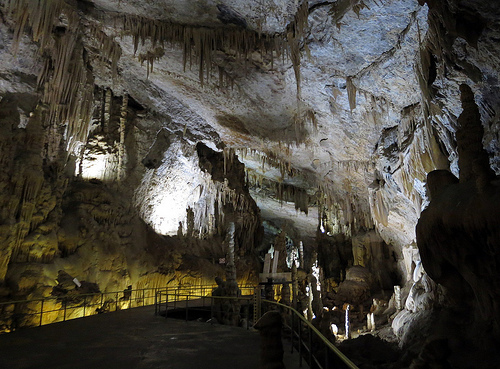Do not get lost in the Jeita Grotto!
- The Jeita Grotto is two different but connected caverns of limestone, known as the ‘Lower Grotto’ and the ‘Upper Grotto’.
- The Jeita Grotto complex is 9 kilometres (5.6 miles) in length.
- The Jeita Grotto is located in the mountainous area of Lebanon, just north of Beirut, where it is the longest cave in the Middle East, and a popular tourist attraction.
- The UpperCave of the Jeita Grotto contains many amazing formations, including the longest stalactite known to humans, with a length of 8.2 metres (27 feet).
- The Jeita Grotto was first discovered by the modern world in 1836, by William Thomson, a missionary from America.
Upper Cave
Image courtesy of Anders Lofgen/Flickr
- During 1873 and 1874, two expeditions were carried out by engineers, W Maxwell and H Huxley who worked for a local water company, and friend Daniel Bliss, who placed a ‘time capsule’ (a bottle with a written note) in one of the caves, which has since been welded into a stalagmite.
- During the Lebanese civil war in 1978, the Jeita Grotto was publicly closed and used mainly as storage facility for equipment needed for the war, and it was reopened in 1995.
- The Lower Grotto of the Jeita Grotto contains an important water source with rapids, and quiet, peaceful areas, and during winter, the lower sections is sometimes closed due to high water levels.
- The Jeita Grotto was one of the finalists in the bid to be one of the New 7 Wonders of Nature in 2011.
- During its history, the Jeita Grotto has been known as ‘Grottoes of Nahr-al-Kalb’, ‘Djaita Grottoes’ and ‘Jehita Grottoes’.
Bibliography:
Jeita Grotto, 2013, Beautiful World, http://www.beautifulworld.com/asia/lebanon/jeita-grotto
Jeita Grotto, 2013, Wikipedia, http://en.wikipedia.org/wiki/Jeita_Grotto







